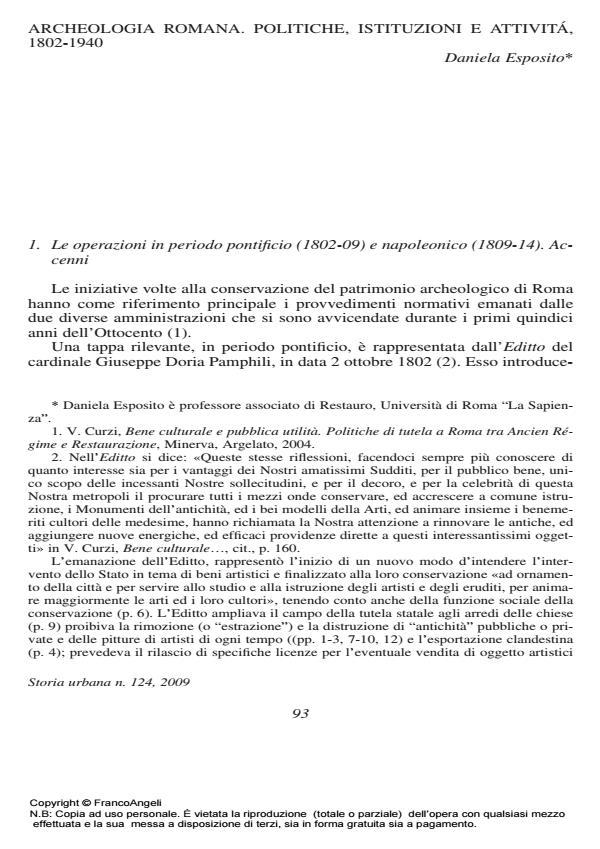Archeologia romana. Politiche, istituzioni e attività. 1802-1940
Journal title STORIA URBANA
Author/s Daniela Esposito
Publishing Year 2010 Issue 2009/124 Language Italian
Pages 29 P. 93-121 File size 10009 KB
DOI 10.3280/SU2009-124004
DOI is like a bar code for intellectual property: to have more infomation
click here
Below, you can see the article first page
If you want to buy this article in PDF format, you can do it, following the instructions to buy download credits

FrancoAngeli is member of Publishers International Linking Association, Inc (PILA), a not-for-profit association which run the CrossRef service enabling links to and from online scholarly content.
Roman Archaeology. Politics, institutions, interventions, 1802-1940 - Archaeology, Rome, archaeological parks, historical center The settlement of archaeological sites and areas in the territory of Rome and their relationship with the urban context, which has been developing and consolidating for centuries, has been the focus of urban planning and design activities mainly in the last centuries. This activity increased rapidly with the numerous excavations carried out under the papal influence and during the French domination in the 18th, and in particular, in the 19th and 20th centuries. This settlement had a diversified impact on pre-existing constructions. In some cases, the memory of Roman traces was preserved as a sign that could be understood over the centuries. In other cases, the relationship between the older constructions and later transformations concerned a larger and more complex area in the city, characterised by the massive presence of Roman structures with a partial material conservation of pre-existing constructions in squares, road traces and so on. Different cases of urban transformation are settlements or creations of archaeological sites often followed massive clearing actions for reasons related to the embellishment of the city or for ideological or representative reasons. A new idea of ‘urban decorum’ was advanced and it generated a sort of isolation of the archaeological structures which they wanted to improve. The relationship between these isolated structures and new road traces was ensured, following the tradition of time, by a system of gardens and green areas.
Daniela Esposito, Archeologia romana. Politiche, istituzioni e attività. 1802-1940 in "STORIA URBANA " 124/2009, pp 93-121, DOI: 10.3280/SU2009-124004